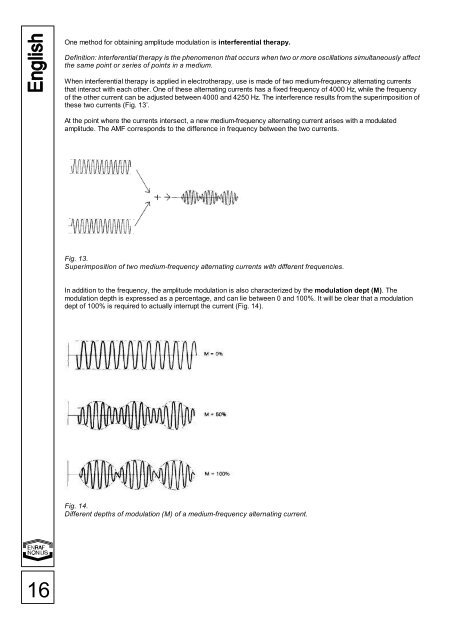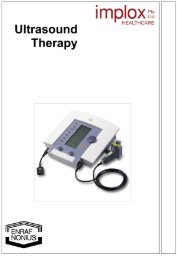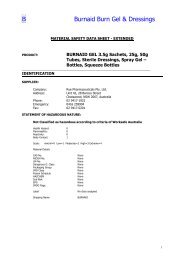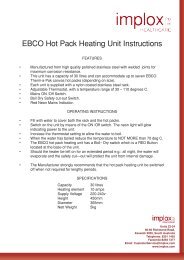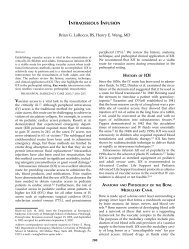Low and medium Frequency Electrotherapy - Implox
Low and medium Frequency Electrotherapy - Implox
Low and medium Frequency Electrotherapy - Implox
Create successful ePaper yourself
Turn your PDF publications into a flip-book with our unique Google optimized e-Paper software.
One method for obtaining amplitude modulation is interferential therapy.<br />
Definition: interferential therapy is the phenomenon that occurs when two or more oscillations simultaneously affect<br />
the same point or series of points in a <strong>medium</strong>.<br />
When interferential therapy is applied in electrotherapy, use is made of two <strong>medium</strong>-frequency alternating currents<br />
that interact with each other. One of these alternating currents has a fixed frequency of 4000 Hz, while the frequency<br />
of the other current can be adjusted between 4000 <strong>and</strong> 4250 Hz. The interference results from the superimposition of<br />
these two currents (Fig. 13’.<br />
At the point where the currents intersect, a new <strong>medium</strong>-frequency alternating current arises with a modulated<br />
amplitude. The AMF corresponds to the difference in frequency between the two currents.<br />
Fig. 13.<br />
Superimposition of two <strong>medium</strong>-frequency alternating currents with different frequencies.<br />
In addition to the frequency, the amplitude modulation is also characterized by the modulation dept (M). The<br />
modulation depth is expressed as a percentage, <strong>and</strong> can lie between 0 <strong>and</strong> 100%. It will be clear that a modulation<br />
dept of 100% is required to actually interrupt the current (Fig. 14).<br />
Fig. 14.<br />
Different depths of modulation (M) of a <strong>medium</strong>-frequency alternating current.<br />
16


